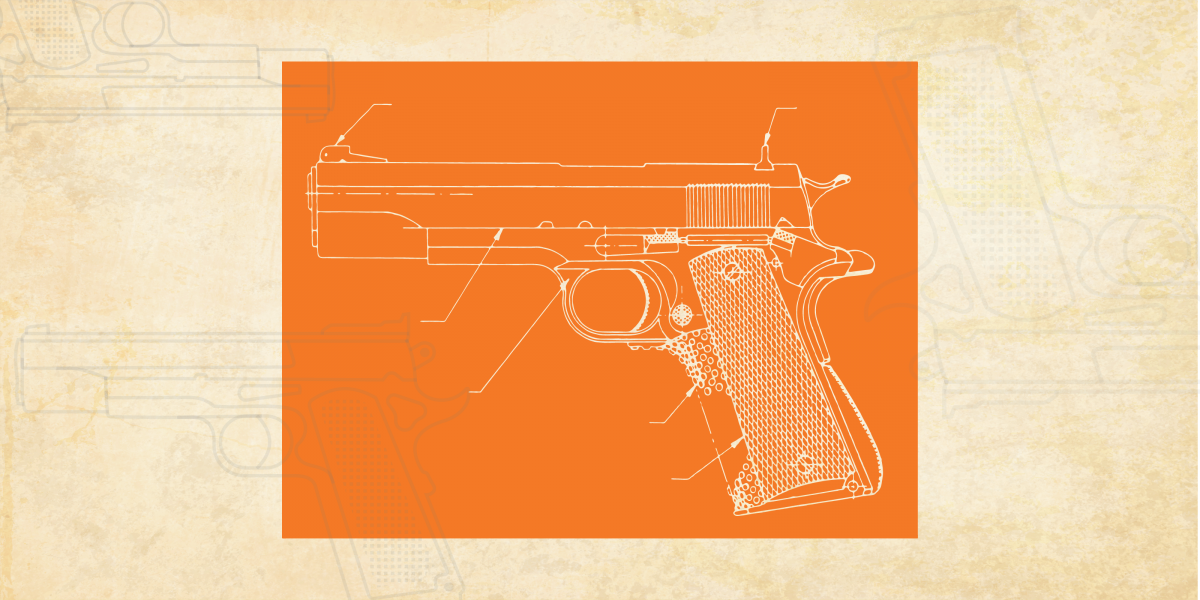Gun Policies That Save Lives
Four evidence-based strategies target the main drivers of gun violence.
With more than 390 million guns in civilian hands, the U.S. has more firearms than people. This daunting fact can make the problem of gun violence seem unsolvable. But research led by the Center for Gun Violence Prevention and Policy has identified laws that are already making a difference—primarily by keeping guns from people who shouldn’t have them.
Extreme Risk Protection Orders
When individuals are behaving dangerously and make credible threats to harm themselves or others, judicial authorizations called ERPOs allow law enforcement to temporarily remove firearms from these individuals—and prohibit them from purchasing guns. “These are people who are in crisis and truly at risk of committing violence, either self-directed or directed at others,” says Shannon Frattaroli, PhD ’99, MPH ’94, a professor in Health Policy and Management. “These orders provide a tool for intervening to temporarily remove guns from the mix.”
In all states with such laws—currently 19 plus the District of Columbia—law enforcement can petition courts for these orders. In some states, family members, intimate partners, clinicians, and school administrators may do so as well. “Compared with other gun violence prevention policies, these are relatively uncontroversial,” Frattaroli says. “There’s been tremendous interest in them from lawmakers.”
While more research is needed, studies from Connecticut and Indiana, which have had these laws for over 15 years, estimate that one life was saved for every 10–20 gun removal actions.
Comprehensive Background Checks and Purchaser Licensing Laws
These approaches are used to prevent gun purchases by individuals with past criminal activity, outstanding warrants, or mental health or substance abuse issues. Federally mandated background checks at the point of sale ensure that the purchaser isn’t in a national database of those prohibited from gun ownership. (The law does not apply to private gun sales.)
Licensing laws require purchasers to submit applications in person to local or state law enforcement. The process involves background checks, waiting periods, and sometimes fingerprinting.
“If you want to buy a gun this afternoon, you can’t do it without this license,” says Alexander McCourt, PhD ’19, JD, MPH, an assistant scientist in Health Policy and Management.
Connecticut has required background checks and licensing since 1995. The combined laws reduced firearm homicides by an estimated 27.8% and firearm suicides by 23.2%–40.5%, according to a 2020 study McCourt co-authored. The study, which examined four states, shows that background checks alone are not effective in reducing firearm homicides or suicides. “It seems to work best to have both in place as a way of making sure that everything’s valid and to double-check the system,” McCourt says.
Removing Guns from People with Domestic Violence Restraining Orders
Research shows that a woman is five times more likely to be killed in a domestic violence situation if a gun is present. Federal law prohibits people under DVROs issued after a court hearing from possessing firearms. (Some states strengthen this prohibition to include ex parte restraining orders, those issued by a judge in emergency situations.)
The federal law defines domestic partners as people who are or were married or living together, or those who have a child together. Some states also include couples who are dating—an important addition, notes April Zeoli, PhD ’07, MPH, an associate professor at the Michigan State University School of Criminal Justice. “Dating partners make up about half of the people who commit intimate partner homicide,” she says.
Another area where these laws need tightening: While those newly placed under restraining orders are flagged in background check databases, Zeoli says some courts don’t order the relinquishment or removal of existing firearms—a step that could save lives.
“My research suggests that in states where the law requires or allows judges to order gun relinquishment, intimate partner homicide decreases an estimated 12%,” Zeoli says.
Data-Driven Law Enforcement Response
Police have long focused on getting illegal guns off the streets, especially in violence-prone areas. In Baltimore and beyond, police often rely on stop-and-frisk practices to detain and search individuals suspected of carrying guns—a “general tactic often too broadly applied,” says Center director Daniel Webster, ScD ’91, MPH, a Bloomberg Professor of American Health in Health Policy and Management.
A 2020 report by Center researchers suggests a more data-driven and accountable strategy.
Webster envisions specialized “gun violence units” that use intelligence gathering and investigations to make arrests for illegal gun possession by people linked to shootings. In contrast to broad patrol efforts to “fish” for guns with large nets, the small teams of highly trained, closely supervised officers would collect and share all data regarding their work, including body camera footage, which would be carefully reviewed by prosecutors to identify illegal enforcement practices and be subject to civilian review. Such transparency is critical to prevent abuse by police and foster community trust.
“We want to reward good policing that’s focused on the kind of behavior that is creating the most harm in the communities,” Webster says.
